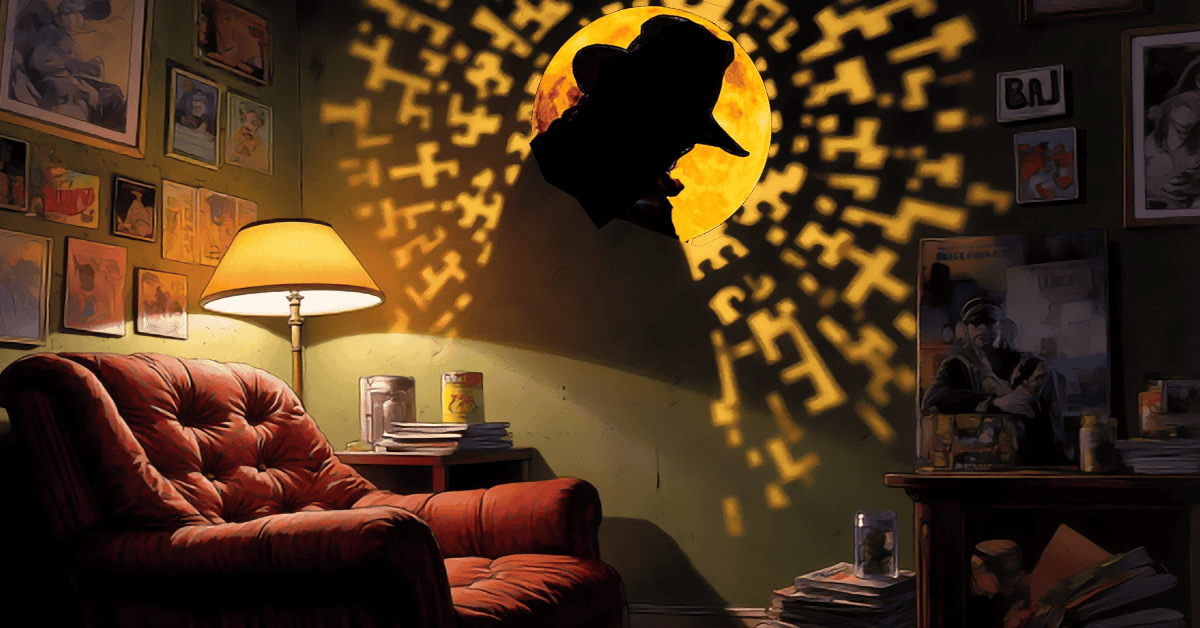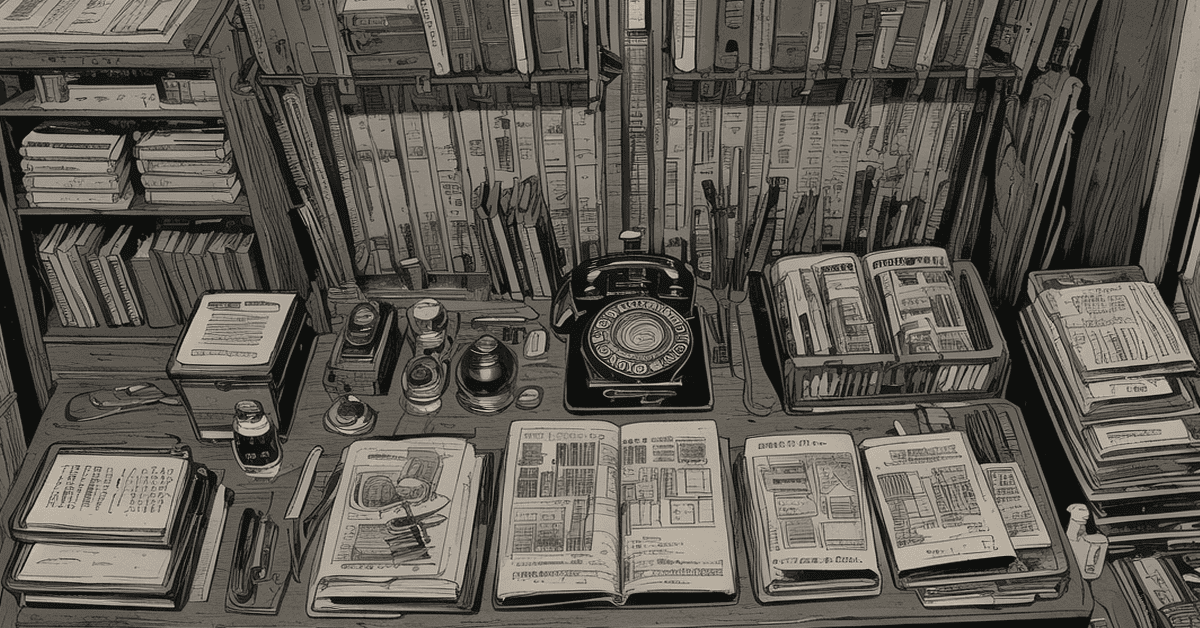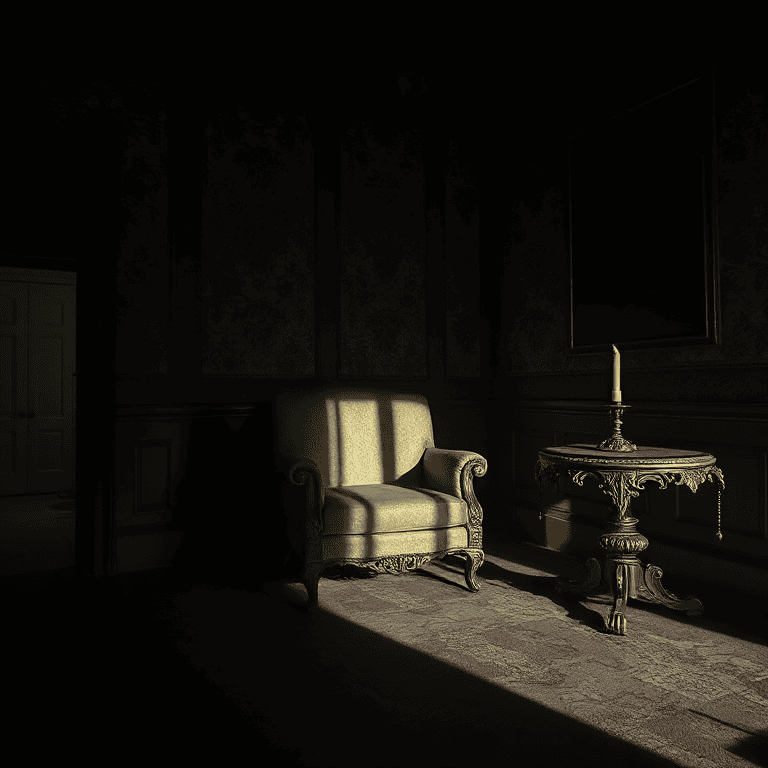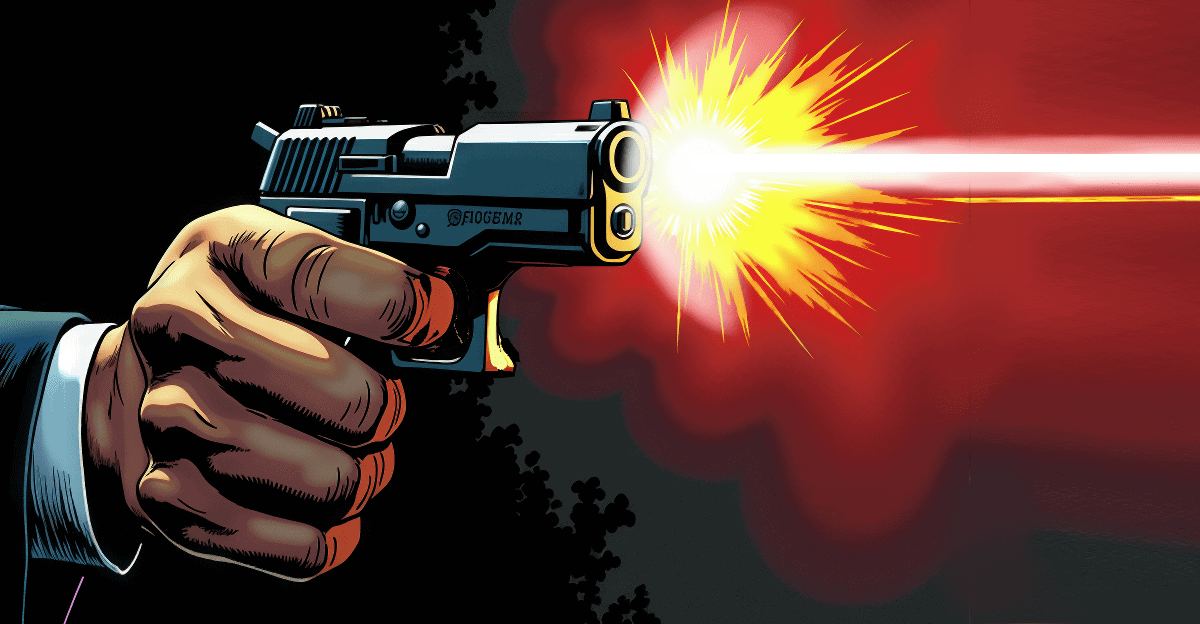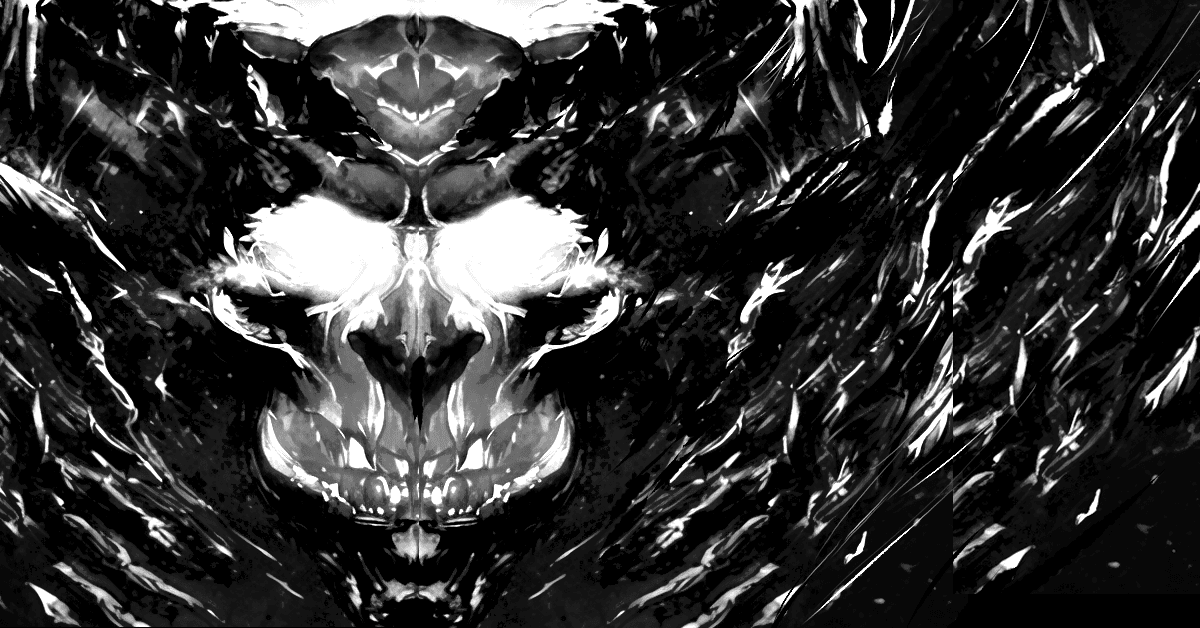 Have you noticed in the past few months that Reddit seems to pop up in almost every single one of your Google search results? Whether you’re looking for product reviews, travel tips, or life advice, those distinctive Reddit threads are almost always there on either page one or two – though it’s usually the former. This isn’t just Google’s algorithm being extra friendly to Reddit – there’s actually a story behind it.
Have you noticed in the past few months that Reddit seems to pop up in almost every single one of your Google search results? Whether you’re looking for product reviews, travel tips, or life advice, those distinctive Reddit threads are almost always there on either page one or two – though it’s usually the former. This isn’t just Google’s algorithm being extra friendly to Reddit – there’s actually a story behind it.
Blog
The Dark Grit and Mystery of Pulp Fiction Comics: Crime and Chaos in Comics’ Golden Age
Pulp Crime Comics: Born in the Shadow of the 1930s Crime Wave
Crime isn’t new, but the 1930s brought it to the front pages and the public imagination in unprecedented ways. Bank heists by the likes of John Dillinger and Bonnie and Clyde, turf wars between mobsters, and the rise of federal law enforcement painted a chaotic picture of America. Amidst this backdrop, pulp crime comics emerged as both entertainment and a reflection of the times—a gritty mirror to a world that felt increasingly lawless.

The Birth of Illustrated Crime
Pulp fiction was so named because of its cheap, gritty format—printed on coarse paper for a dime. Its stories were blunt, its heroes morally ambiguous, and its villains larger than life. For Depression-era audiences, struggling through breadlines and widespread unemployment, these tales offered a strange mix of escape and validation. The crimes in their neighborhoods weren’t all that different from those on the page.
In 1931, Dick Tracy introduced readers to its square-jawed detective, hunting gangsters straight from Chicago’s headlines. Comics like Crime Does Not Pay (1942) dug into true-crime tales with a zeal for lurid details. These stories didn’t just entertain—they warned, moralized, and, at times, glorified the underworld.
Visual Storytelling Meets Noir
Pulp crime comics weren’t subtle. Artists leaned on heavy shadows, exaggerated emotions, and stark contrasts to pull readers into a world where danger loomed around every corner. The cities felt alive in the worst way—claustrophobic mazes of dirty alleys, flickering neon signs, and smokey rooms where deals were sealed with handshakes or gunshots.
Detectives were hardened antiheroes, shaped by war and wary of trust. The femme fatales, with motives as sharp as their cheekbones, reminded readers that danger came in many forms. These stories invited readers to wrestle with their moral compass, asking: who’s really the villain here?
Post-War Boom and the Changing Face of Crime
By the 1940s, war veterans had little appetite for sugar-coated stories. They wanted grit, and publishers delivered. EC Comics, with series like Crime SuspenStories, dove into the darkest corners of the human psyche. Other publishers like Timely Comics (the precursor to Marvel) brought a pulpy edge to tales of heists, betrayals, and desperate last stands.
As the decade progressed, crime comics reflected a growing anxiety about modernity. Organized crime was no longer the stuff of alley brawls—it was boardroom corruption, rigged elections, and quiet threats that could bring down entire communities.
The Crackdown: Crime Comics on Trial
By the 1950s, the bubble burst. Rising fears about juvenile delinquency and public morality made comics a convenient scapegoat. Dr. Fredric Wertham’s Seduction of the Innocent accused the medium of corrupting America’s youth. Senate hearings followed, and the Comics Code Authority imposed harsh restrictions:
- Heroes had to win.
- Criminals could never be sympathetic.
- Violence was sanitized to the point of irrelevance.
The code didn’t just sanitize crime comics—it neutered them. Many publishers folded; others pivoted to superheroes or squeaky-clean stories.
Legacy and Revival
Though crime comics were nearly extinguished, their DNA lived on. In the 1980s and beyond, creators like Frank Miller (Sin City) and Ed Brubaker (Criminal) resurrected the gritty realism and moral ambiguity of their pulp predecessors. These modern stories owe much to the illustrators and writers of the 1930s and 1940s who proved that comics could be raw, dark, and unapologetically human.
Today, crime comics enjoy a resurgence without the censorship shackles of the past. From indie publishers to digital formats, the genre continues to evolve. But at its core, it’s still about the same things: the shadows we live in, the choices we make, and the consequences that follow. Crime comics remind us that even in a four-color world, life isn’t black and white.
The Cozy Mystery Genre: From Drawing Rooms to Global Phenomenon
The Coziest Crimes: Why We Love Gentle Murder Mysteries
True crime junkies and thriller fans might turn their heads, but there’s a special charm in cozy mysteries. It’s the paradox we didn’t know we needed—gruesome murders solved amidst charming villages, teacups, and quirky amateur detectives. But how exactly did this wholesome-meets-homicide genre carve out a space in our hearts?
The Gentle Origins of Mayhem
A Golden Foundation
The cozy mystery owes its origin to the 1920s and 1930s, during the Golden Age of Detective Fiction. Agatha Christie, the genre’s matriarch, set the stage. Her beloved Miss Marple stories established enduring tropes:
- Small, tightly knit communities
- Murders committed offstage
- A focus on human nature rather than gore
- Characters we want to have tea with—except for the murderer, of course
A Template for Timelessness
Christie’s brilliance wasn’t just in crafting a puzzle but in how she made us care about the sleuths and the suspects. Miss Marple wasn’t just a spinster; she was a quiet observer of life’s moral cracks. The contrast of human nature against genteel backdrops ensured readers could confront dark themes without losing sleep.
What Makes a Mystery Cozy?

As a kid, I started with the adventures of Encyclopedia Brown and moved on to the Hardy Boys and Nancy Drew. Later on, I found Sherlock Holmes and Agatha Christie’s Hercule Poirot. The cozy mystery genre of that period was the principal domain of Miss Marple. She dominated the field for decades.
Now, of course, you can’t go on Amazon books without stepping on a cozy mystery title. These mysteries abound, my friend. They come in a variety of flavors for a wide range of tastes.
Think of cozy mysteries as comfort food for the curious mind. Their hallmarks include:
- Settings: Picturesque small towns, bookstores, or a local café where everybody knows your name (and the gossip).
- Characters: Relatable, curious amateurs with an eye for details—and often a knack for matchmaking on the side.
- Crime Style: Deaths happen, but without the graphic scenes or lingering despair.
- Tone: A little humor, a lot of heart, and the certainty that good will triumph.
These stories give us more than a whodunit. They’re a warm invitation to imagine a world where justice is certain and decency wins out.
Growing Popularity in Turbulent Times
Post-War Escapism
By the 1940s, cozy mysteries became more than entertainment; they were a balm. After years of global unrest, readers found comfort in stories where justice was restored, and communities thrived.
From Bookshelves to Screens
The late 20th century brought cozy mysteries to our televisions. Shows like Murder, She Wrote and Midsomer Murders created cult followings, blending intrigue with warmth. These adaptations helped the genre shed its literary niche and become a household staple.
Today’s Cozy Mysteries
Modern Twists
Contemporary cozies reflect the world we live in—diverse, connected, and occasionally caffeinated. Today’s detectives might be bakers, podcasters, or retired librarians. They might solve crimes in urban settings, online forums, or even fantasy realms.
Digital Storytelling
The internet has turbocharged cozy mystery publishing. Authors now reach readers through e-books, fan communities, and self-publishing. Digital spaces aren’t just marketplaces; they’re gathering spots for a growing fandom.
Why Do We Keep Reading?
Cozies let us explore dark themes without the weight. They offer puzzles that challenge the brain but soothe the soul. It’s not just about solving a murder; it’s about seeing decency win in the end.
- Mental Puzzles: Who doesn’t love piecing together clues?
- Relatable Heroes: Amateur detectives remind us that everyday folks can make a difference.
- Community Appeal: Returning to familiar characters feels like visiting old friends.
What’s Next for the Genre?
Expect hybrid storytelling. Cozy mysteries are merging with fantasy, historical fiction, and even true crime. Graphic novels, podcasts, and interactive formats are taking the genre in fascinating directions.
From its tea-stained roots to its digital transformation, the cozy mystery has proven that it’s more than just a niche—it’s a necessity for those who crave justice with a side of charm.
The genre’s ability to adapt to changing times while preserving its core elements ensures its place in the literary landscape. As readers continue to seek both escape and engagement, the cozy mystery genre stands ready to provide both, one small-town murder at a time.
Unlocking the Mystery Genre: Tips for Writing Captivating First-Person Amateur Sleuth Stories
Introduction: Embracing the World of Cozy Mysteries
Cozy mysteries, a sub-genre of crime fiction, have captivated readers worldwide with their unique blend of intrigue and charm. Unlike hard-boiled detective stories that deal with gritty urban environments and violent crimes, cozy mysteries often feature an engaging amateur sleuth solving puzzling crimes in a more homely setting. These narratives invite readers into a world where they can indulge in the thrill of the chase without the darkness that often accompanies traditional mysteries. For writers eager to delve into this genre, understanding how to craft compelling first-person stories featuring an amateur sleuther is key to unlocking the cozy mystery’s full potential.
Defining the Amateur Sleuth: Qualities and Quirks
The heart of every cozy mystery is the amateur sleuth – an ordinary person with a knack for nosing out the truth. This protagonist, often female, possesses a sharp intellect, insatiable curiosity, and a strong moral compass, which draw her into the role of a detective. Beyond these traits, it’s the sleuth’s quirks and personal qualities that endear them to readers – be it a passion for knitting, baking, or antiquing. These personal hobbies not only add depth to the character but also commonly play into their method of puzzle-solving and inadvertently aiding their investigations.
Setting the Scene: Crafting the Perfect Small-Town or Village Backdrop
A quintessential element of cozy mysteries is the setting – typically a quaint village or small town that feels like a character in itself. The backdrop provides a contrast to the sinister undertones of the mystery, offering a sense of safety and familiarity. Writers must carefully construct these worlds with enough detail to transport their readers while weaving in the locations as integral pieces of the puzzle. Every shop, local event, and town tradition can serve as a potential clue or suspect hideout, thus intertwining community and crime in a compelling tapestry.
Maintaining the Cozy Factor: Balancing Intrigue and Limited Violence
While intrigue and surprise twists are the lifeblood of any mystery, cozy mysteries are distinct in their handling of violence and danger. These stories avoid graphic descriptions and instead focus on lighter aspects, such as intellectual puzzles and character interactions. Writers must strike a delicate balance, providing just enough peril to keep the stakes high while maintaining the comfort that defines the genre. To accomplish this, the thrill of the hunt is emphasized over the crime itself, allowing the reader to become a part of the sleuth’s journey without stepping outside the bounds of coziness.
Mastering Puzzle-Solving: Keeping the Reader Guessing
The art of writing a successful cozy mystery lies in the ability to create a puzzle that is both complex and solvable. Readers should be presented with all the clues needed to solve the mystery, yet not so obviously that the ending is apparent from the beginning. Well-placed red herrings, misleading information, and secretive characters all contribute to a maze that the reader enthusiastically navigates alongside the amateur sleuth.
The Power of First-Person Narratives: Immersing Your Readers
Using a first-person perspective in cozy mysteries offers an intimate experience, allowing readers to see the world through the eyes of the sleuth. This point of view can help establish a connection between the protagonist and the reader, providing real-time reactions and thoughts as the mystery develops. It’s crucial for the narrative voice to be likable and relatable, encouraging readers to invest emotionally in the story. The use of “I” and “my” becomes a powerful tool to immerse readers fully in the unfolding investigation.
Creating a Female-Centric Story: Strength and Sensibility
Cozy mysteries often center around a female protagonist, whose daily life and relationships are as much a part of the story as the mystery itself. The genre lends itself to showcasing women in positions of intelligence and power, utilizing their unique strengths and sensibilities to advance the plot. As these characters navigate the complexities of both personal life and amateur sleuthing, writers should aim to create a multifaceted character who resonates with readers on multiple levels.
Developing a Cast of Characters: Allies and Adversaries
No sleuth, no matter how skilled, can unravel a mystery alone. A colorful cast of supporting characters, both friends and foes, enriches the story. From the charming but secretive bookstore owner to the protagonist’s confidante and partner-in-crime-solving, each character has the potential to either aid or thwart the investigation. Writers must carefully consider the role each character plays, ensuring they are more than mere placeholders but essential to the fabric of the plot and community.
Weaving Threads of Suspense: Plot Pacing and Red Herrings
Suspense is a crucial ingredient in keeping a cozy mystery engaging. To maintain a gripping pace, writers must master the ebb and flow of tension, knowing when to introduce complications and quandaries. The insertion of red herrings distracts and misleads, creating a satisfying challenge for both the amateur sleuth and the readers. Timing is everything; the key is to scatter these false leads judiciously throughout the narrative to build suspense without causing frustration.
Conclusion: The Art of Satisfying Conclusions in Cozy Mysteries
In cozy mysteries, a satisfying conclusion is not just about revealing the culprit; it’s about tying up the myriad of threads woven throughout the story. The solution to the mystery must make logical sense based on the clues laid out, and any character development or side plots should reach a rewarding resolution. When done well, the ending of a cozy mystery not only provides a fulfilling close to the current tale but also leaves readers eagerly anticipating the amateur sleuth’s next adventure. The mastery of cozy mystery writing lies in leaving readers both contented and curious, wrapped in the warmth of a world they’re reluctant to leave.

Writing Comic Book Scripts: Crafting Mysteries in Panels and Pages
The process often begins at the climax. Who did it, how, and why? The narrative threads that lead to the culprit are carefully unraveled backward. Think about it: you need every red herring, misdirection, and reveal placed with precision. If the readers figure it out too early, the magic fizzles. But if you overcomplicate, they lose interest. Balancing these elements is what separates the amateurs from the masters.

Crime Writers and Their Creative Process
Some of the best-known crime comic writers lean heavily on that backward strategy. Ed Brubaker, the brain behind Criminal and The Fade Out, exemplifies this. Brubaker’s stories operate like puzzles in a smoky noir bar—shadows thick, tension taut. He knows the crime inside-out before writing the first page. That’s how every panel serves the story’s slow, deliberate release. Another favorite, Brian Azzarello, pulls this off flawlessly with 100 Bullets. Each issue feels like peeling a layer off an onion, and it burns just enough to make you want more.
Frank Miller, with works like Sin City, injects crime fiction with hard-hitting dialogue and stark, stylized visuals. His scripts are not just blueprints but roadmaps littered with broken glass and danger signs. Every beat, every character’s nuance, screams noir.
These writers immerse themselves in their characters’ psyches, understanding not just their motives but also their flaws. Whether it’s obsession, fear, greed, or loyalty gone wrong, the crime comes from somewhere real. This is where comics become more than just “illustrated stories”—they become psychological deep dives.
Building a Mystery: Tips and Tricks for Writers
Writing a mystery comic isn’t just about plot twists. It’s about control—what the reader knows and when they know it. Here are some key ideas to keep your audience hooked:
- Start at the End: Know the crime inside and out. The ‘who,’ ‘why,’ and ‘how’ will dictate every decision along the way.
- Visual Clues: Comics let you scatter evidence visually. A seemingly innocuous object in panel three might be the murder weapon—let the reader catch it if they can.
- Character-Driven Crime: The best mysteries are more than just puzzles—they’re people-driven. Develop characters with rich backstories that give the crime emotional weight.
- Use Silence Wisely: Not every page needs heavy dialogue. Some of the best moments in a mystery are communicated through what’s not said.
- Collaborate Closely with Artists: A great comic script leaves room for artistic interpretation. Writers like Neil Gaiman have famously worked this way, giving artists creative freedom to amplify the story. Your script isn’t sacred—it’s a conversation.
The Graphic Novel Format: Playing the Long Game
When a mystery spans a graphic novel, you have room to develop subplots and secondary characters in ways that single issues can’t. Think of The Black Dahlia adaptation by David Lapham—it’s long-form noir, not unlike James Ellroy’s original novel. Lapham uses pacing as a weapon, building tension slowly over time. Every conversation matters. Every dead end serves the plot.
Or take Watchmen by Alan Moore. While it’s more than a mystery, it weaves investigative storytelling throughout. Moore mastered the art of layered narratives—framing stories within stories, clues within red herrings, and characters confronting their own worst instincts. That’s what separates a good mystery from a great one: it leaves the reader guessing not just about the crime, but about the people involved.
Write with Intent, Not Expectation
Writing a mystery comic or graphic novel is an act of both creation and restraint. You lay down the rules, only to break them in ways the audience doesn’t see coming. You have to make them think they’re in control until you reveal—nope, not even close. That’s the art.
Remember: every writer borrows tricks from somewhere. Brubaker’s noir leans on the old black-and-white films. Miller found inspiration in pulp novels. Even Azzarello is channeling Chandler in his own twisted way. But the magic happens when you make it yours.
So, start with the crime. Work your way back through the lies, the secrets, and the shadows. Just make sure that when your detective arrives at the truth, your reader is right there, piecing it all together—or kicking themselves for not seeing it sooner.
Crafting Enchanting Worlds: Mastering the Art of Writing Supernatural Cozy Mysteries

The realm of supernatural cozy mysteries is a unique intersection of suspense, whimsy, and the paranormal. These stories, set against the backdrop of charming locales, offer a magical twist to the classic whodunit formula.
But how does one craft a narrative that balances the eerie with the endearing, the mysterious with the mundane? This article delves into the heart of writing supernatural cozy mysteries, offering techniques and insights to weave narratives that captivate and enchant.
Understanding the Genre
1. The Essence of Cozy Mysteries
- Setting and Atmosphere
Cozy mysteries are set in small, close-knit communities. The supernatural element adds a layer of enchantment, transforming everyday settings into realms of mystery. - Character-Centric Narratives
The protagonist, often an amateur sleuth, is relatable and likable, drawing readers into their world.
2. Incorporating the Supernatural
- Subtle vs. Overt
Determine the extent of supernatural elements in your story. It could range from slight magical hints to overtly fantastical themes. - Consistency is Key
Establish rules for your supernatural world and stick to them throughout the narrative.
Crafting Your Plot
3. Balancing Mystery with Magic
- Intriguing Beginnings
Start with a compelling hook that intertwines the supernatural with a hint of mystery. - Sustaining Suspense
Weave the supernatural seamlessly into the plot. It should complement the mystery, not overshadow it.
4. Plot Twists and Puzzles
- Clues and Red Herrings
Use the supernatural to create unique clues and misdirections. - Satisfying Conclusions
Ensure the resolution is both surprising and logical within the established supernatural framework.
Character Development
5. Crafting Believable Characters
- Three-Dimensional Characters
Even in a supernatural world, characters should have depth, flaws, and growth. - Relatable Protagonists
The sleuth should be someone readers can root for, with a natural knack for solving mysteries.
6. The Role of Side Characters
- Allies and Antagonists
Use side characters to introduce humor, conflict, and further the plot. - Mystical Beings
If including supernatural entities, give them distinct personalities and roles in the story.
Writing Techniques
7. Building an Enchanting World:
- Descriptive Writing
Use vivid imagery to paint your supernatural cozy world, making it a character in its own right. - Balanced Narrative
Ensure a harmonious blend of dialogue, description, and action.
8. Maintaining Cozy Tones
- Light-Hearted Elements
Despite the mysteries, maintain a warm, comforting undertone. - Community and Connections
Emphasize themes of friendship and community as a counterbalance to the supernatural elements.
The Upshot
Writing supernatural cozy mysteries is an art that requires a delicate balance of intrigue, charm, and imagination. By following these techniques and tips, you can craft stories that transport readers to enchanting worlds where magic and mystery coexist in the coziest of settings. Remember, the key is to create a narrative that captivates with its supernatural elements while comforting with its cozy warmth.
Here’s what comes next
Start penning your supernatural cozy mystery today, and let your imagination guide you to create a world that both mystifies and delights your readers.
Unlocking the Charm of Supernatural Cozy Mysteries in Comics: A Magical Blend of Mystery and the Supernatural

In the realm of storytelling, the fusion of the supernatural with the cozy mystery genre in comics creates a captivating blend. It’s a world where the intrigue of whodunnits meets the mystical, often with a touch of humor and warmth. Supernatural cozy mysteries in comics have carved out a unique niche, appealing to a wide range of readers who crave a bit of magic with their mysteries.
The Enchanting World of Supernatural Cozy Mysteries
What makes them irresistible?
- A Comforting Escape: These comics offer an escape into a world where even the most mysterious events have a comforting resolution.
- Balanced Storytelling: The blend of supernatural elements with cozy mysteries provides a perfect balance between the thrill of the unknown and the comfort of the familiar.
- Character-Driven Narratives: Often centered around charismatic and relatable protagonists, these stories engage readers on a personal level.
Popular Themes and Elements
- Mystical Settings: From haunted bookshops to magical small towns, the settings are as enchanting as the stories.
- A Hint of the Paranormal: Elements like psychic abilities, ghosts, and witches add an intriguing layer to the traditional mystery plot.
- Community and Connection: These comics often emphasize themes of community and connection and often include a dose of humor.
Why Do Readers Love Them?
The appeal of supernatural cozy mysteries in comics lies in their ability to combine suspense and whimsy. They offer a refreshing take on traditional mystery storytelling, where the supernatural elements add depth and imagination. These stories are not just about solving a crime but also about exploring the mystical in everyday life.
Key Reasons for Their Popularity
- A Unique Twist on Mystery: The supernatural aspect provides a unique twist to the classic mystery plot, keeping readers engaged and guessing.
- Artistic Expression: The comic format allows for creative visual storytelling, enhancing the supernatural and cozy elements through artwork.
- Wide Audience Appeal: These comics appeal to a broad audience, attracting both mystery enthusiasts and fans of supernatural fiction.
The Allure of Mystery-Solving Partners in English and Japanese Comics
Storytelling thrives on great mysteries. Add a dynamic duo to the mix, and you’ve got a winning formula. Whether it’s English-language comics or Japanese manga, mystery-solving couples bring a potent blend of drama, chemistry, and clever sleuthing to the table. Let’s break down some standout titles and why they click with fans.
English Mystery Comics Featuring Dynamic Duos
The Maze Agency
Mike W. Barr’s “The Maze Agency” delivers a perfect mix of romance and intrigue. Jennifer Mays, an ex-CIA agent turned PI, and her boyfriend, true-crime writer Gabriel Webb, make an unbeatable team. Their cases are as sharp as their chemistry. The real hook? Watching their professional lives collide with their personal drama, keeping you guessing about more than just the crimes.
Ms. Tree
From 1981 to 1992, Ms. Tree distinguished herself as a unique investigator. After her husband’s murder, Michael Tree takes over his detective agency. She’s tough, smart, and often flies solo, but her relationships and occasional partnerships add a human layer to the gritty plots. It’s noir with heart, and readers couldn’t get enough.
Sandman Mystery Theatre
Set in the shadowy 1930s, “Sandman Mystery Theatre” brings Wesley Dodds and Dian Belmont together for psychologically rich mysteries. The Sandman’s cerebral approach pairs beautifully with Dian’s grounded perspective. Their evolving relationship is just as intriguing as the dark secrets they unravel.
Blake and Mortimer
While “Blake and Mortimer” hails from Belgium, it’s got a solid English-speaking fan base. Professor Philip Mortimer and Captain Francis Blake are a classic detective duo. Think high-stakes mysteries, dastardly villains, and a camaraderie that’s stood the test of time.
Japanese Mystery Manga with Enigmatic Partners
Q.E.D. (Quod Erat Demonstrandum)
Sou Touma’s brilliance meets Kana Mizuhara’s fiery determination in this manga series. Together, they tackle puzzles that demand both brains and guts. Sou’s calm logic clashes with Kana’s high energy, and the result is pure magic.
Remote
Kurumi Ayaki thought she left police work behind—until she’s paired with Kōzaburō Himuro, a genius detective who never leaves his basement. Their remote partnership creates a fascinating mix of suspense and humor. It’s like a long-distance relationship, but with crime-solving.
The Detective Is Already Dead
Kimihiko Kimizuka’s life takes a wild turn when he meets Siesta, a legendary detective. The series balances global conspiracies with their deepening bond. Even when the story shifts, the impact of their partnership lingers.
Ron Kamonohashi: Deranged Detective
Ron Kamonohashi is an eccentric PI with a troubled past. Totomaru Isshiki is an eager but green cop. Together, they solve bizarre mysteries in a partnership full of growth and surprises. They may not be romantically linked, but their dynamic is electric.
Why Mystery-Solving Partners Captivate Us
What makes these pairs so compelling? It’s the mix of intellect, emotion, and chemistry. The mysteries pull us in with twists and turns, but it’s the human connection that keeps us hooked. The stakes are higher when hearts are on the line, and the push-pull dynamic between the characters adds another layer of tension.
From gritty English noirs to quirky Japanese who-dun-its, mystery-solving couples remind us why two heads—and hearts—are better than one. When love, trust, and intellect collide, the results are nothing short of captivating.
Crafting the Perfect Supernatural Cozy Mystery Comic
For writers and artists, creating a supernatural, cozy mystery comic involves a delicate balance. Here are some key considerations:
- Developing Engaging Characters: Characters should be well-developed and relatable, with unique quirks that make them stand out.
- Balancing Mystery and Magic: The supernatural elements should complement, not overpower, the mystery at the heart of the story.
- Visual Storytelling: Artwork plays a crucial role in setting the tone and enhancing the narrative.
The Upshot
Supernatural cozy mysteries in comics are more than just a genre; they are a delightful experience that melds the intrigue of mysteries with the allure of the supernatural. They offer readers an imaginative escape, complete with captivating stories, charming characters, and a visual feast that only comics can provide.

